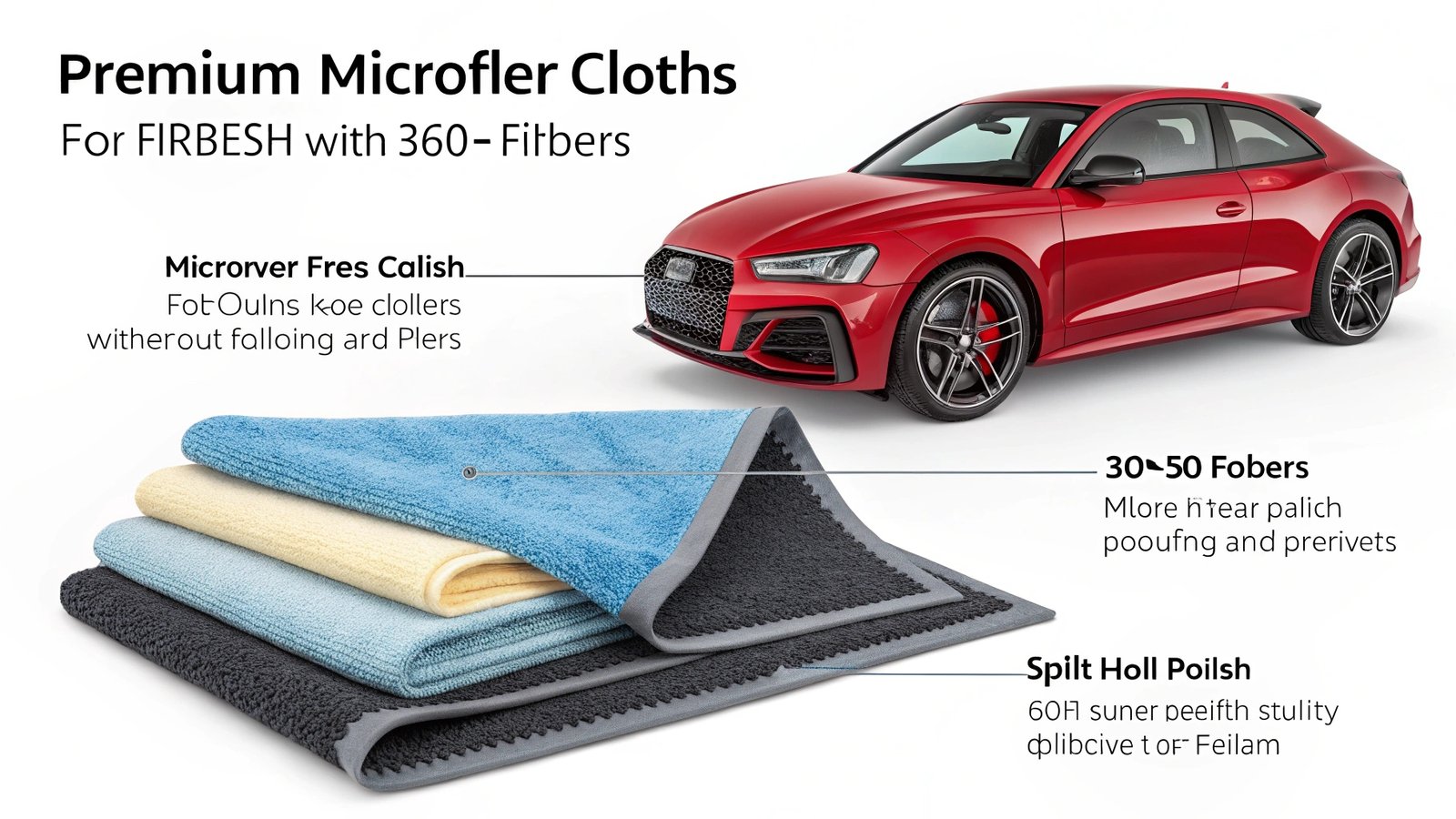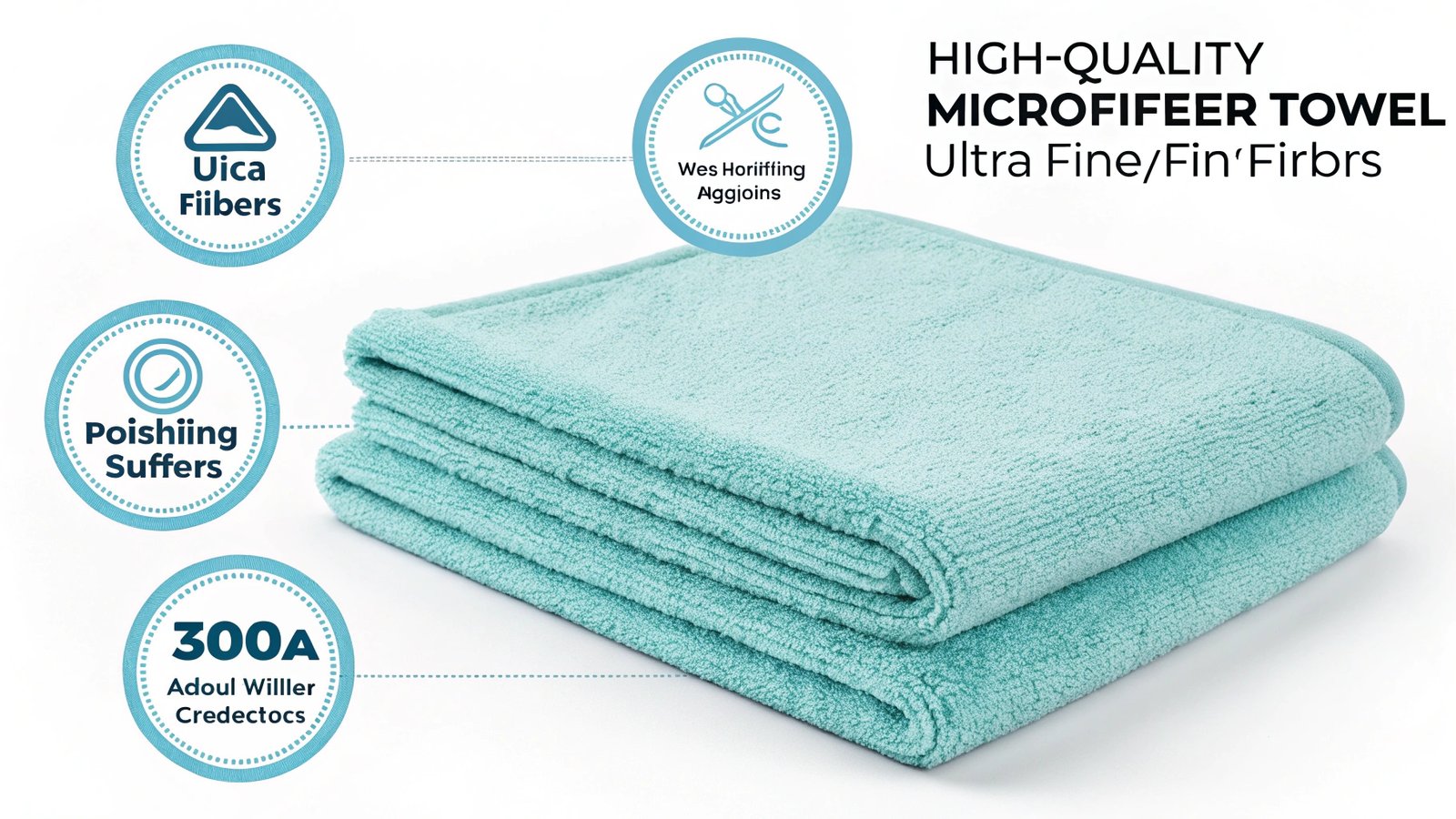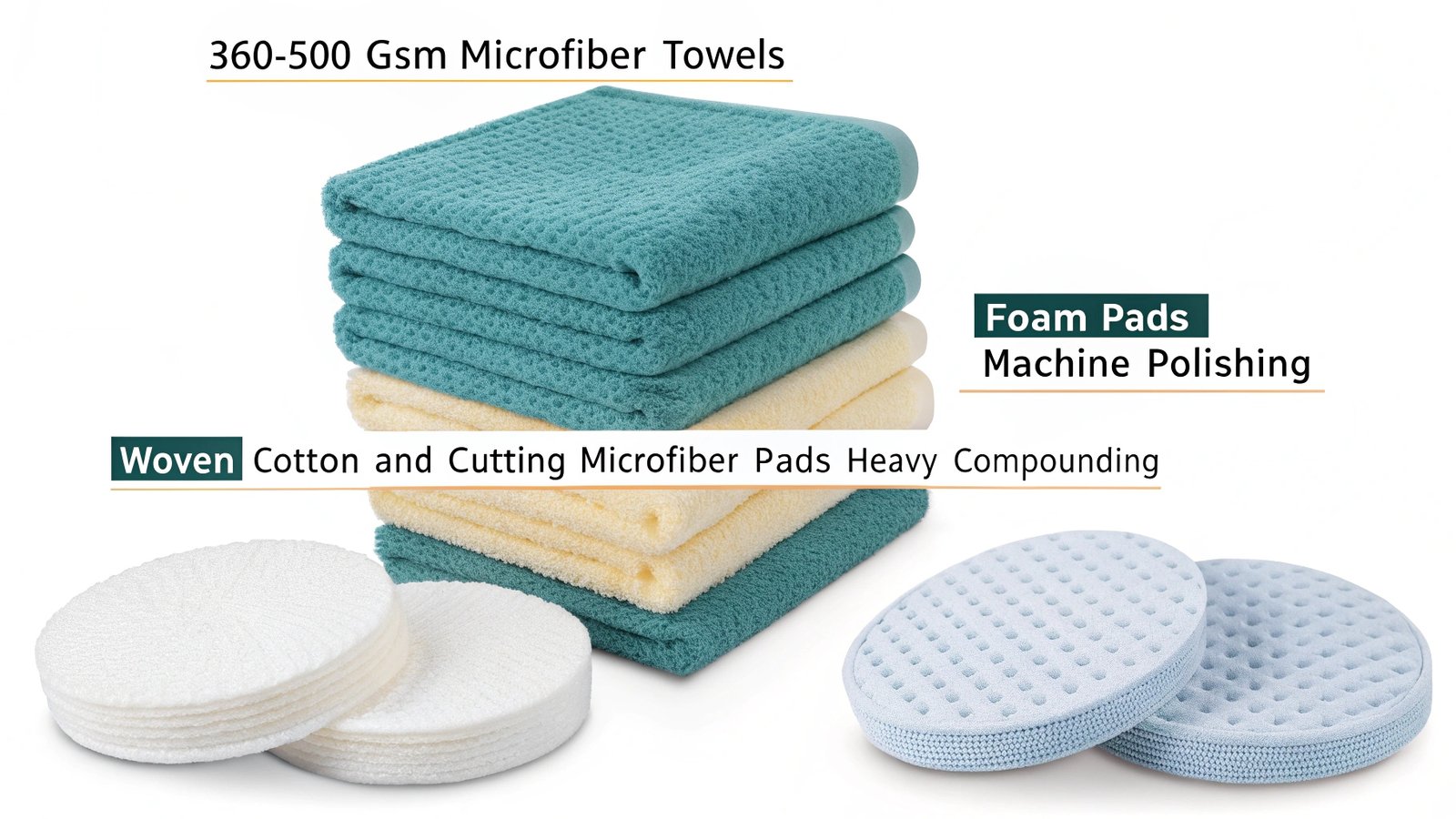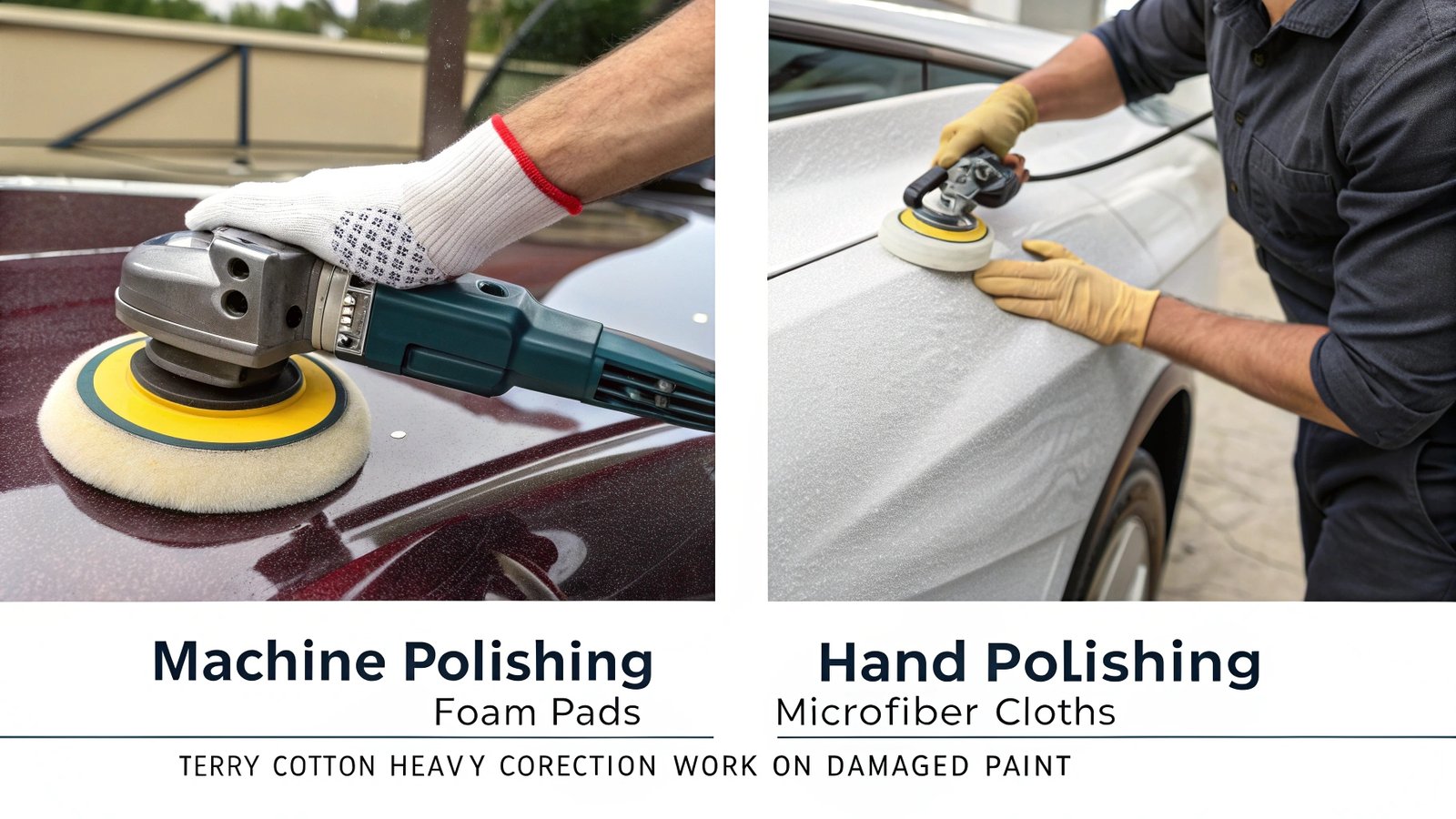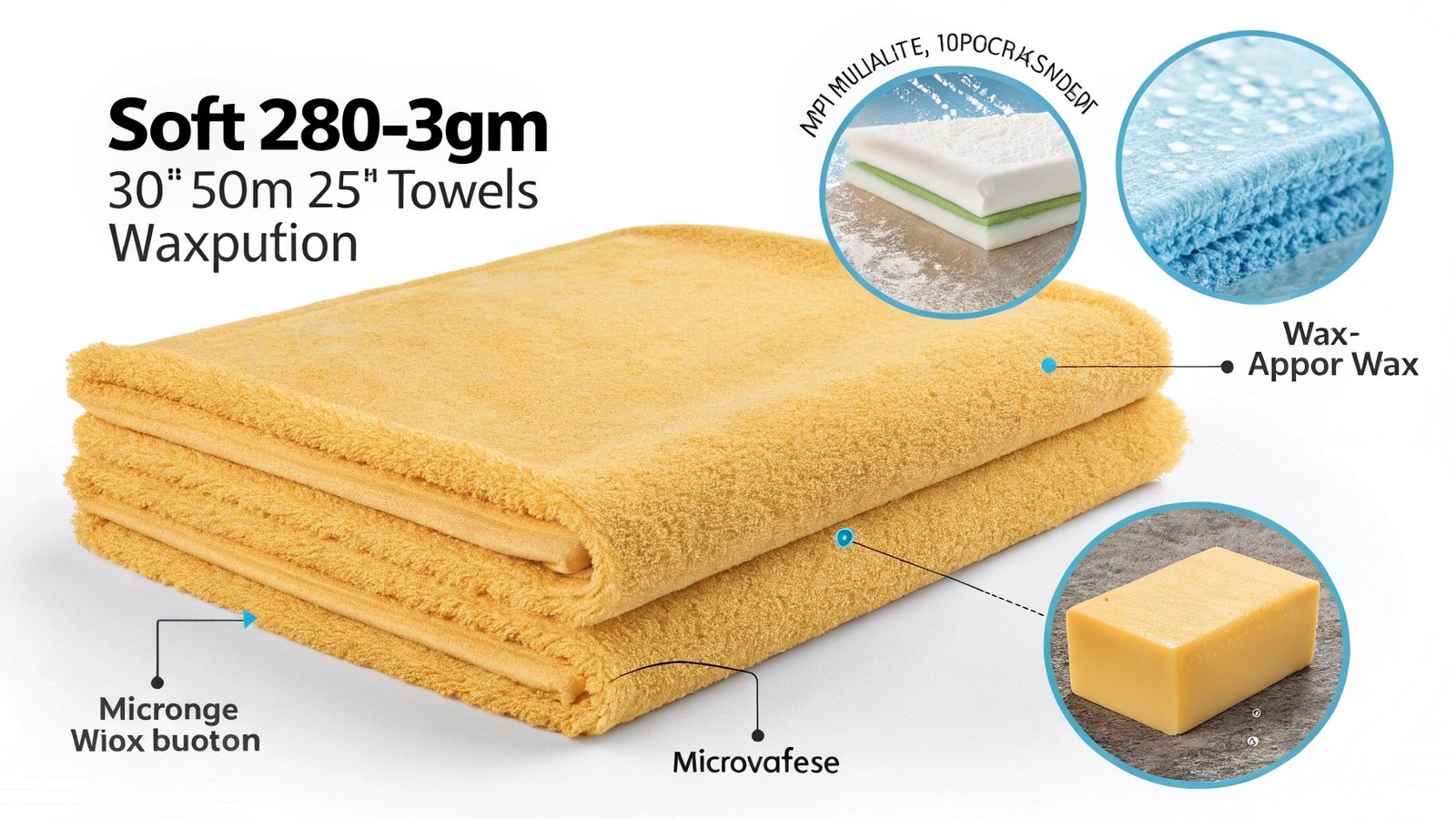Staring at polish smears on your car paint? Choosing the wrong applicator ruins finishes fast. This wastes your time and damages surfaces you worked hard to protect.
Yes, premium microfiber cloths (350-450 GSM) are excellent for applying car polish. Their split fibers hold products without scratching while ensuring even distribution and residue-free results.
Picking the right cloth matters more than most realize. Using improper materials causes swirls or uneven polishing that takes hours to fix.
Is microfiber good for polishing?
Ever see tiny scratches after polishing? Cheap cloths create these marks by trapping grit between fibers and your car’s delicate clear coat.
High-quality microfiber is ideal for polishing. Its ultra-fine split fibers gently abrade surfaces without scratching. Choose 300-450 GSM towels with sealed edges for safe, effective product application.
Not all microfiber works equally. Consider these factors when selecting towels:
Performance Factors:
- Fiber density impacts scratch resistance
- GSM weight affects polish absorption
- Seam stitching prevents edge damage
- Fiber length determines application smoothness
| Microfiber Grades: | Type | Best Use | GSM Range |
|---|---|---|---|
| Economy | Interior surfaces | 180-250 | |
| Premium | Light polishing | 300-400 | |
| Professional | Paint correction | 450+ |
Always check these traits:
- Blend ratio (70/30 polyester/polyamide)
- Colorfast dye (no color transfer)
- Lint-free construction
- No chemical treatments
What cloth is best for polishing a car?
Frustrating hologram effects after polishing? This often comes from mismatched cloth density and polish abrasiveness.
For hand polishing, 360-500 GSM microfiber towels work best. Machine polishing requires foam pads. Heavy compounding needs woven cotton or cutting microfiber pads for maximum correction.
Match cloth type to polishing stage:
Polishing Stage Guide:
| Stage | Purpose | Best Cloth |
|---|---|---|
| Compounding | Remove scratches | Woven microfiber |
| Polishing | Enhance shine | Medium GSM MF |
| Finishing | Deep reflection | Plush MF |
| Waxing | Protection layer | 300-400 GSM MF |
Critical considerations:
- Use different cloths per product
- Fold towels for clean sections
- Clean after every panel
- Replace when fibers compress
- Store flat to prevent creases
What is the best material to polish a car with?
Seeing dull results after polishing? Your application material directly affects gloss depth and protection longevity.
Machine polishing works best with foam pads. Hand polishing excels with microfiber cloths. Use terry cotton only for heavy correction work on damaged paint.
Material choices impact results:
Performance Comparison:
| Material | Friction Level | Scratch Risk | Durability |
|---|---|---|---|
| Microfiber | Medium | Low | 25+ washes |
| Foam Pad | Low | Very low | 5-10 uses |
| Cotton Terry | High | Medium | 15-20 washes |
| Synthetic Sponge | Variable | High | Replace often |
Choose based on:
- Paint hardness (softer paint needs gentler materials)
- Polish abrasiveness levels
- Desired finish (matte vs glossy)
- Time investment required
What is the best cloth to apply car wax?
Wax fading too quickly? Using incorrect cloths prevents proper bonding. This reduces protection and water beading effects.
Soft 280-350 GSM microfiber towels work best for wax application. Avoid foam applicators – they absorb too much product, creating uneven coverage and waste.
Maximize wax effectiveness:
Applying vs Removing:
- Use low-nap MF for application
- Use plush MF for removal
- Never reuse applicators across products
- Maintain dedicated wax-only cloths
| Wax Cloth Traits: | Trait | Importance | Reason |
|---|---|---|---|
| Softness | Critical | Prevents swirls | |
| Absorbency | Medium | Avoids product saturation | |
| Lint-free | Essential | No residue left behind | |
| Weave density | High | Ensures even coverage | |
| Size | Personal preference | 16x16 inches ideal |
Conclusion
Microfiber cloths work well for polishing when chosen carefully. Match GSM, weave type, and texture to your specific car care task for perfect results.

